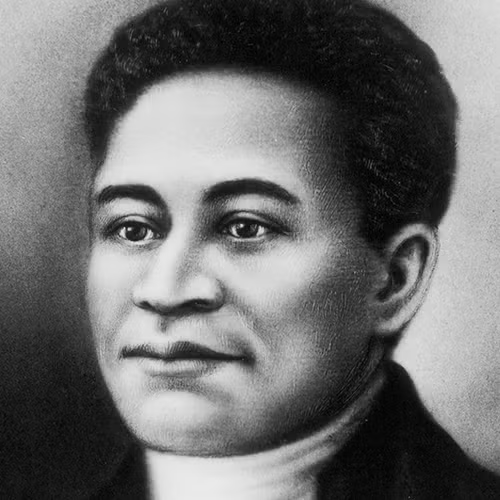
Table of Contents
Who Was Crispus Attucks?
Crispus Attucks, a figure of significant historical importance, is known primarily for his role in the Boston Massacre, where he was the first to fall on March 5, 1770. Attucks’ parentage is characterized by a complex heritage: his father was likely an enslaved African, while his mother was of Natick Indian descent. Attucks’ legacy has been commemorated through the Crispus Attucks monument, which was unveiled in Boston Common in 1888.
Early Life
Born into slavery around 1723, Crispus Attucks was the son of Prince Yonger, an enslaved African brought to America, and Nancy Attucks, a member of the Natick Indian tribe. The details of Attucks’ early life and family are sparse, with records indicating that they lived in a town near Boston.
Available accounts suggest that Attucks demonstrated a notable aptitude for trade and commerce from a young age, displaying a willingness to defy the constraints of slavery. Historians have speculated that he may be the individual referenced in a 1750 Boston Gazette advertisement. The ad, placed by a white landowner, offered a reward of ten pounds for the return of a young runaway enslaved person:
“Ran away from his Master, William Brown of Framingham, on the 30th of Sept. last, a Molatto Fellow, about 27 Year of age, named Crispas, 6 Feet two Inches high, short curl’d Hair…”
Despite the challenges, Attucks successfully escaped the bonds of slavery and spent the subsequent two decades working on trading ships and whaling vessels that frequented Boston. Additionally, he worked as a rope maker, further establishing his independence.
Crispus Attucks and the Boston Massacre
As British authority over the American colonies tightened, relations between the colonists and British soldiers grew increasingly strained. Crispus Attucks, a prominent figure in this volatile environment, was directly impacted by the worsening conditions. As a seaman, Attucks and others in his profession faced the constant threat of impressment into the British navy, while British soldiers routinely competed with colonists for local employment opportunities.
On March 2, 1770, tensions flared between a group of Boston rope makers and three British soldiers. The situation deteriorated further three nights later when a British soldier, seeking employment, entered a Boston tavern and encountered an enraged group of sailors, including Attucks.
The precise sequence of events that followed remains contested, but that evening, a group of Bostonians began to harass a British soldier stationed in front of the customs house. As the situation escalated, additional British troops arrived to support their comrade, intensifying the conflict. The confrontation rapidly deteriorated as more Bostonians joined the fray, hurling snowballs and other objects at the soldiers.
Death
Attucks was positioned at the forefront of the confrontation among a crowd of individuals when the British soldiers began firing. He was the first of five men to be killed in the incident, making him the first casualty of the American Revolution.
This tragic event, soon to be known as the Boston Massacre, significantly accelerated the colonies’ path toward conflict with Great Britain.
Trial After the Boston Massacre
The controversy surrounding the Boston Massacre intensified when Captain Thomas Preston and the eight soldiers involved were acquitted, having been defended on grounds of self-defense. John Adams, who would later become the second President of the United States, represented the soldiers during the trial. Adams argued that the colonists had acted as an unruly mob, compelling his clients to fire in self-defense.
Adams contended that Crispus Attucks played a leading role in instigating the violence. However, there has been ongoing debate about Attucks’s level of involvement in the confrontation. Samuel Adams, a future Founding Father, asserted that Attucks was merely “leaning on a stick” when the shots were fired, suggesting a less aggressive role in the incident.
Accomplishments and Legacy
Crispus Attucks, hailed as a martyr, was honored posthumously when his remains, along with those of the other victims of the Boston Massacre, were transported to Faneuil Hall and laid in state. In a notable gesture of unity and respect, city leaders temporarily suspended segregation laws to allow Attucks to be buried alongside the other fallen individuals.
Attucks’ legacy has endured through the centuries, first inspiring American colonists in their quest for independence from British rule. His impact continued to resonate with 19th-century abolitionists and 20th-century civil rights leaders. Dr. Martin Luther King Jr., in his seminal 1964 work Why We Can’t Wait, praised Attucks for his moral courage and pivotal role in shaping American history.
